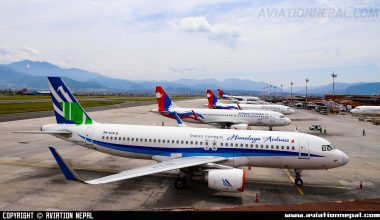
Downside of Flying
Do you love flying? Well, who does not. It’s so fun after all. But science says think twice before flying. Filthy, germ-laden, rotten, disgusting, wretched, skanky, rancid, putrid, fetid, and fart-filled are just a few of the adjectives used by people to describe cabin air, and legion are the accounts of flyers allegedly made ill by microscopic pathogens mixing throughout a plane. Jetlag is not the only thing you need to worry when travelling at 30,000 feet altitude. Dehydration, ear pain, hypoxia, joints pain, fatigue and tiredness, etc. are some common symptoms that may occur to a person either during or after the flight hours. According to the Aviation Health Institute, the number of passenger’s deaths each year after being taken ill during flights equals those killed in aircraft accidents.
A normal human being can breathe air without any oxygen supplement up to 8,000 ft. (2,400 m) but people with heart or lung conditions have difficulty breathing after 5,000 ft. (1,500 m) altitude. However, cabin pressurization becomes necessary at altitude above 12,500 ft. (3,800 m) to protect crew and passengers from the risk of a number of physiological problems caused by the low outside air pressure above that altitude. It also serves to generally increase passenger comfort and is a regulatory requirement above 8,000 ft. (2,400 m). Although the cabin pressure is below the standard atmospheric pressure, hypoxia is fairly relevant except for people with some medical conditions.
One of the few problem people face in the cabin is dehumidified air. Relative humidity in economy class is typically between 10% and 15%, but it can drop as low as 5% in some condition. The humidity level is our houses is typically above 30%. Low humidity may cause skin dryness and distress to the eyes, mouth and nose but presents no risk to health. This is because our skin naturally perspires water vapor and it may lead to dehydration. WHO advises to use skin moisturizing lotion or a saline nasal spray to moisturize the nasal passages and maintain normal intake of fluids except caffeine and alcohols that have diuretic effects (causing more urine to be produced). Low humidity is a necessity, since high water vapor content will eventually condense and corrode the aluminum body of the aircraft and thus weaken the structural integrity of the aircraft raising the risk factor. Nonetheless, the humidity that is maintained by an aircraft largely depends on the aircraft design and operating conditions. However, aircraft like Boeing 787 Dreamliner and Airbus A350 can maintain humidity up to 25% since their major portion of fuselage is made up of composites.
Another problem that most people face is ear and joint pains, although this is more significant during rapid descend/ascend. This happens due to the inability of our body to respond to the rapid change in the surrounding pressure as the gases trapped inside our body expand or contract. The commonly experienced pain is in middle ear although it may occur in teeth cavities and gastrointestinal tract. Usually this may result in swelling after flight and may prove fatal to existing condition like pneumothorax. Commercial airlines provide passengers with ear plugs or cotton swabs before take-off to help reduce the pains. Another solution is to use noise reducing headphones available in the markets. A person may feel like tired or dizziness during flight hours. All that sitting causes metabolic rate and digestion to slow, and causes gas, bloating, and constipation. The legs may go numb after being seated for longer hours and there is an obvious problem of jetlag. Lack of oxygen or reduced pressure in the environment may cause a person to feel tired. This may eventually lead to dizziness and headaches. On the other hand, our body takes time to adjust its clock with the time zones we cross during flight. So, longer the flight hours, more is the chance you will feel tired and jetlagged. The solution is to remain calm and relaxed during flight hours, eat only light meals, move your legs and body around a bit occasionally. Not to remain confined to the seat. Get up and walk around occasionally or use restrooms. There is also provision of flight socks that help to prevent blood clots in legs. A study published in The Lancet in 2007 found that consistent disturbance of body rhythms could lead to cognitive decline, psychotic and mood disorders.
Involuntary hyperventilation can occur in response to the reduced pressure in the cabin. This involuntary action is caused by our body in order to maintain the partial pressure of oxygen in our body. People with pulmonary and cardiovascular disease may experience this during flight hours. This is nothing but a method devised by our body to tackle hypoxia at relatively lower cabin pressure. But the increase in CO2 in our body raises pH value of the blood and may cause alkalosis. This again leads to fatigue, nausea, headaches, sleeplessness, etc. to name a few.
On most international flights, you are exposed to a not entirely insignificant dose of radiation from cosmic rays. The longer the flight and the higher and closer you fly to the North Pole, the greater the dose. For example, on a round trip flight from Washington, DC, to Beijing, you can easily surpass the dose you would get from a chest X-ray. Scientists say for the average tourist the levels are not significant to worry about, but common flyers might want to find out more about what levels they are exposed to.
Altitude induced decompression sickness is another problem that may occur during flight hours. At sea level, 80% of nitrogen is inhaled during respiration which has partial pressure of 608 mm Hg. At elevated altitudes, the pressure drops and thus nitrogen gas trapped inside our body try to expand in form of bubbles. The most common site for bubble formation is knees, shoulders, ankles and elbows. This causes severe pain and it is called ‘bends’. Doctors recommend SCUBA divers not to fly until 48 hours after sea dive below 50 ft.
As a fun fact people order tomato juice in an airplane. A 2010 study by Lufthansa discovered that passengers’ ability to taste salty and sweet can drop by as much as 30 percent in-flight. This is because plane air dehydrates out the mucous membranes in your mouth. You are dehydrated. And hence, you may be longing a beverage. The solution? Stay hydrated, and stick to sour, bitter, and spicy foods, tastes that are much less affected. And tomato juice, typically very salty on the ground, may taste less intense at higher altitudes, where our taste buds have a hard time detecting salty flavors.






